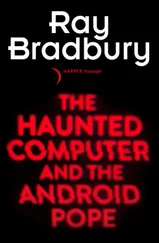Sirius lasted a bit longer than Gebelli Software. Its young programmers, attracted by the legends of six-figure royalties, turned out Beer Run , Jellyfish , The Earth Dies Screaming, and a dozen others. But although the products were hot, many of them were shallow and failed to sustain their hold on the market of increasingly sophisticated Apple users. Then, at the end of 1982, Sirius decided to jump into the Atari video game market. It had seen the huge profits companies like Activision had rolled up and decided that it was time to play for bigger stakes. They joined up with 20th Century-Fox Video Games, attracted by that company’s marketing clout among mass merchandisers, and for more than a year Sirius’s programmers worked on virtually nothing but video games. Unfortunately, it was the wrong year to work on video games. As we shall see when we examine the causes of the software shakeout, the collapse of the Atari game cartridge market caught many people unprepared.
Brøderbund didn’t have a better vision of the future than Sirius did. Atari, one of the most spectacular success stories in history, didn’t seem to be heading for a fall. We managed to avoid trouble simply because we didn’t have the technical ability to figure out how to program the Atari VCS, or at least we didn’t back then. It was a very tightly guarded secret. The Sirius people offered to give us the technology, but only if we published through them, which we didn’t want to do.
We became better acquainted with the people at Sirius and other software companies (especially Sierra On-Line) at the shows and at a series of parties and activities that we shared. At shows we would rush over to one another’s booths on set-up day to see who was putting on the most impressive display and who had the most interesting new products. If one of the others had outdone us, we would feel chagrined, but it wasn’t the kind of cutthroat competition that was happening in the hardware realm. One would hardly expect to see IBM and Apple planning parties together.
There truly was a sense of brotherhood among the California game companies, but that didn’t mean we always shared our trade secrets with one another. Sirius, as the “leading company,” seldom shared information with the rest of us, although we socialized together. The Sirius people saw us as competition, and they wanted to win. Brøderbund’s relationship with Ken and Roberta Williams, however, extended much further. Although we wouldn’t have expected anyone to give us information that had been obtained at great cost, like the secrets of the Atari video game machine, we helped one another when we could.
Ken and Roberta Williams’s company—On-Line Systems, or, as it was called later, Sierra On-Line—constitutes its own software empire up there in the gold rush country of the Sierra foothills. Ken Williams himself is a major part of anybody’s history of the software industry. He has cooked up and implemented more ideas over the past four years than anyone else in the industry, and, as an innovator, he has no match.
Ken is a big, amiable, slightly sloppy-looking man with a congenial twinkle in his blue eyes. His wife and business partner, Roberta, is tiny in comparison with him, and in contrast to his aggressive and outgoing style she has to push through her natural shyness in order to speak out on matters she feels are important. She has strong opinions and is less carefree than Ken. Theirs is a combination that works—she channels his raw energy and focuses his creative ambitions. Although Ken is the programming talent in the family, they might never have started their own business if Roberta hadn't taken the initiative to create their first product.
Without Roberta acting as a rudder, Ken would probably be over his head in projects, instead of just up to his neck. A short list of his achievements—and attempted achievements— is startling. He started the distribution company that later turned into Softsel, the world’s largest distributor of computer software. He and Roberta added the first graphics to adventure games and co-founded On-Line Systems. He co-founded one of the first mail-order businesses, Calsoft. He co-founded one of the earliest magazines, Softline. He wrote one of the first game generators that could be used by a nonprogrammer. He was one of the very first publishers to take in venture capital to accelerate the growth of his business. And he got into licensing deals long before most of the other cottage publishers dreamed that such marketing activities could be within their financial reach.
As an example of his continual exploration of new possibilities, one day in 1982 Ken called me and said that he had a proposition for me to consider. How would I like to form a company with him to put computers and computer software into hotel rooms? He had done a lot of thinking about it and suggested that we meet in Los Angeles to try to whip the idea into shape.
So I flew down to L.A. while Ken and Roberta drove down from their Sierra foothills headquarters in their big pickup. They were buying a motorboat and were planning to haul it back home the next day. We all went to a steak house and talked about the plan. What emerged was a blueprint for an intriguing new business that might permit us to profile our software products for a lot of bored travelers. However, the whole idea depended on finding the right person to run the business. Ken clearly didn’t have the time, and neither did I. When we were unable to find the right manager for the business, we let it drop, but the episode gave me a sense of the way Ken’s creative mind works. He not only comes up with an extraordinary number of ideas, but he pushes and prods them along until a lot of them come to fruition.
But our discussion in L.A. wasn’t the first time we had talked about joining forces. In the summer of 1981, Ken extended invitations to about fifty people—including Gary, me, and our sister Cathy—in the microcomputer industry to join him on a whitewater rafting trip down the Stanislaus
River, a beautiful, exciting, Sierra riverway that would be buried forever by a new dam only a few months after our trip. That trip was the first time I had spent any time with Ken or Roberta other than at a trade show, and it was a pleasure to see them away from the competitive pressure. Of course, it was impossible for fifty computerists to go anywhere without talking shop, and the river guides frequently had to shout at us: “Hey, forget computers. Look around you!”
The river guides had a point. The river was extraordinarily beautiful. We had water fights. We swam and ate and spent our time in honest sunlight—a refreshing change from being squirreled away in musty offices or basking in the midnight glow of computer screens. Ken rode down some of the rapids while standing on the bow of his raft and holding the bowline like a pair of reins. At other times we all swam through the rapids, shrieking like kids in the ice-cold water. And in the evening when everyone gathered around the campfire, Ken and I wandered off and speculated about whether or not we should merge our two companies.
It was good fun. What was more important to us than the possibility of an actual merger was our willingness to consider it in the first place. In effect, the merger discussions were a way of saying to each other: “I like you and respect your business and your abilities.” We also shared a desire to be important, and if merging our companies could make us important in the eyes of the world, that might be reason to at least consider it. The merger never happened because of geography (we didn’t want to move to the Sierra foothills and they didn’t want to move to San Rafael) and because there were no real benefits to such a measure (our companies were too similar).
Читать дальше










